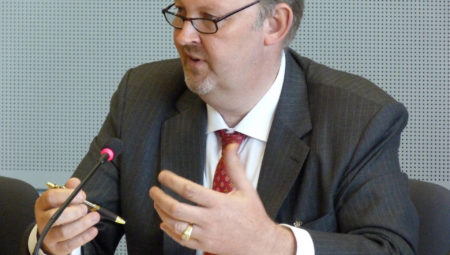With the BBI-program entering its third year, the momentum is clearly visible, according to Dirk Carrez, executive director of the Biobased Industries Consortium, a conglomerate of roughly 70 companies and 150 research institutions. BIC together with the EU are funding the BBI JU: up until 2020 1 billion euro will be funded by the EC to which the industry will add 2.7 billion euro. The partnership mobilizes investment in innovative facilities and processes that manufacture high-quality biobased products as well as in biorefining research and demonstration projects.
This money will be invested in five value chains: the route from lignocellulosic feedstock to advanced biofuels, biobased chemicals and biomaterials, next generation forest-based value chains, next generation agro-based value chains, new value chains from (organic) waste and integrated energy, pulp and chemicals biorefineries.
Sustainable feedstock
From the first two calls various projects have been set into the motion, once they had been approved by the BBI-board. Some examples are First2run and Provides. The first project, headed by Novamont, is directed at next generation agro-value chains. Carrez: ‘The industry is interested in biomass as a feedstock but sustainability is key, especially in Europe and the US. Therefore, crops that do not compete with food – also in terms of land use – come into play. In this project, the technological, economic and environmental sustainability at an industrial scale of the processing of underutilized oil crops (i.e. cardoon) is investigated. These crops contain bio-monomers and esters that will be further transformed into bioproducts, such as biolubricants, cosmetics and bioplastics.
Provides is aimed at forestry-value chains, to be more precise to develop deep eutectic solvents that are able to separate lignin, hemicellulose and cellulose under mild conditions. The advantages: less chemicals, lower processing costs and a better quality end product.
Sidestreams from the food industry
For the third call the emphasis – in terms of flagship projects – is on new chemical building blocks or plastics and sidestreams from the foodindustry. Carrez: ‘This call has just opened, so it is too early to disclose anything about the proposals as many have yet to come in. What I can say is that the food industry in general has expressed great interest in this subject, which doesn’t surprise me. It is a mature sector that handles vast amounts of biomass, both edible and non-edible.’
Around 100 Mt of food waste and residues from food processing industry are generated every year in the EU, of which around 38 per cent at the processing stage. These plant- or animal-based waste streams or by-products are currently either unusable or underused. Hence the economical and ecological to explore higher valorisations of these sidestreams at an industrial scale.
SME’s on top
Carrez states that the BBI JU, three years after the start, has gained momentum in the EU. ‘The BIC had 30 members in 2013, at the moment more than 200 public and private partners have joined the initiative. In terms of company participation, SME’s have the upper hand. As an example, the share of SMEs in the total number of participants in proposals retained for funding is 37 per cent. These enterprises are mostly directed at technology development or the development of new, innovative products.’
There is also more interest from biobased (regional) clusters throughout Europe. In the beginning, the clusters in Northwest-Europe, the UK, Belgium, France, Germany, the Netherlands, were more involved. ‘Now we see that biobased clusters in other parts of Europe are getting on board. Finally, other industry sectors, see the aforementioned food production industry, have become interested in the possibilities the bio-economy has to offer.’
New value chains
According to Carrez, the real added value of BBI is bringing different sectors and industries together. ‘This leads to the creation of new value chains, with different partners working together within a single project. With this 2016 Call, new areas were introduced such as research topics using algae and other aquatic biomass, demo projects focusing on industrial crop varieties and novel sources of biomass such as municipal solid waste or flagship actions addressing waste-streams and by-products from the food processing industry.’



